Pressure Immobilisation First Aid
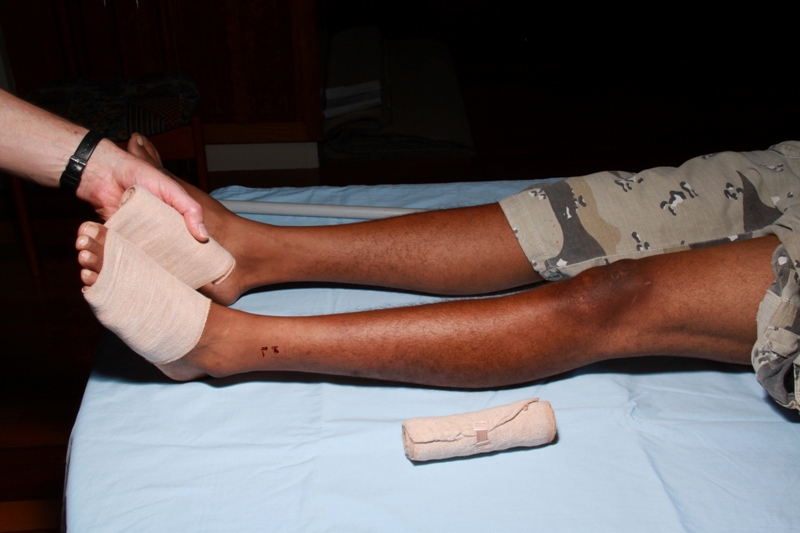
Bites to the lower limb
1. Move the victim away from the snake. Calm and reassure them. Jewelry such as toe rings and ankle bracelets should be removed before the bandage is applied.
Regardless of where on the limb the bite has occurred, commence bandaging from just above the toes (leave these uncovered so that blood flow to the nail beds can be monitored).
Crepe bandages are ideal, but any flexible material may be used. Clothing, towels etc may be torn into strips. Panty hose have been successfully used.
Do not take off clothing, as the movement of doing so will promote the movement of venom into the blood stream. Keep the bitten limb, and the patient, still.
Bandage upwards from the lower portion of the bitten limb. Even though a little venom may be squeezed upwards, the bandage will be more comfortable, and therefore can be left in place for longer if required.
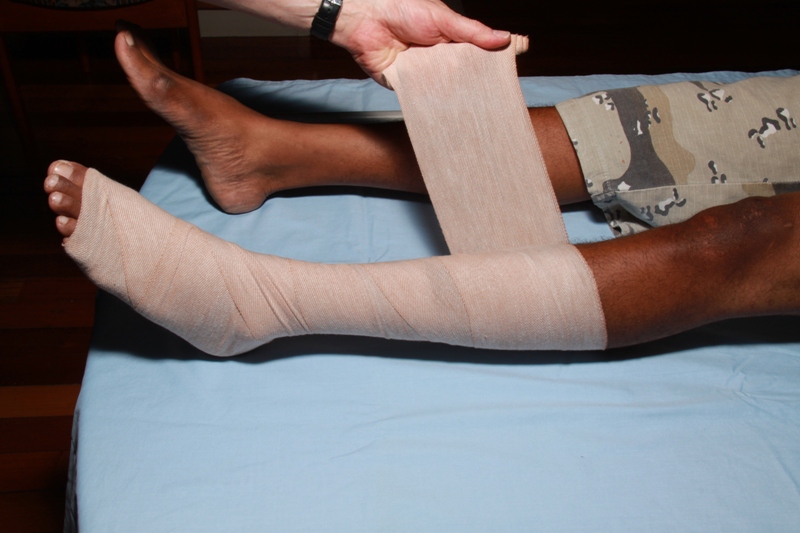
2. The bandage should be as tight as you would apply to a sprained ankle.

3. Extend the bandage as high as possible up the limb.
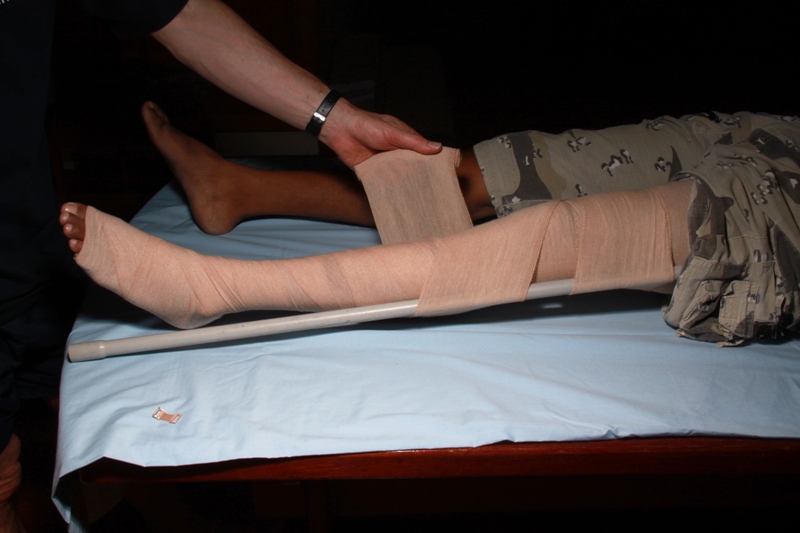
4. Apply a splint to the leg. Any rigid object may be used as a splint. e.g. spade, piece of wood or tree branch, rolled up newspapers etc.
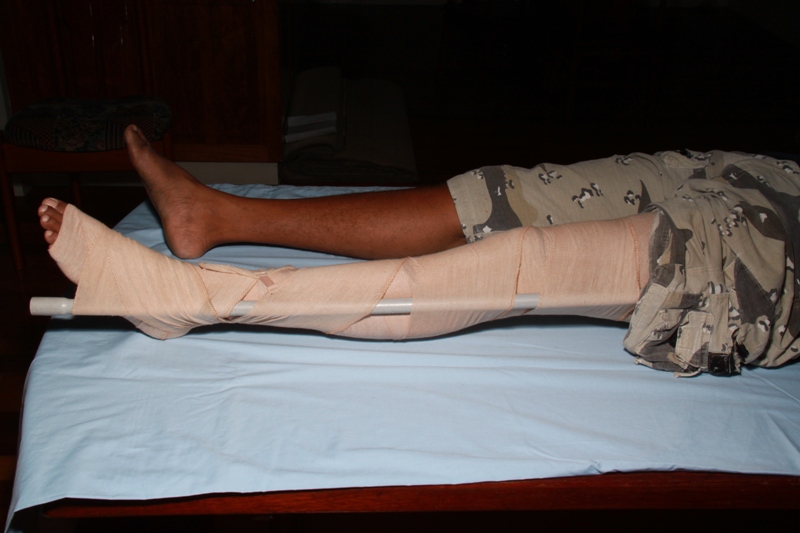
5. Bind it firmly to as much of the leg as possible.
Keep the patient still. Lie the patient down to prevent walking or moving around.
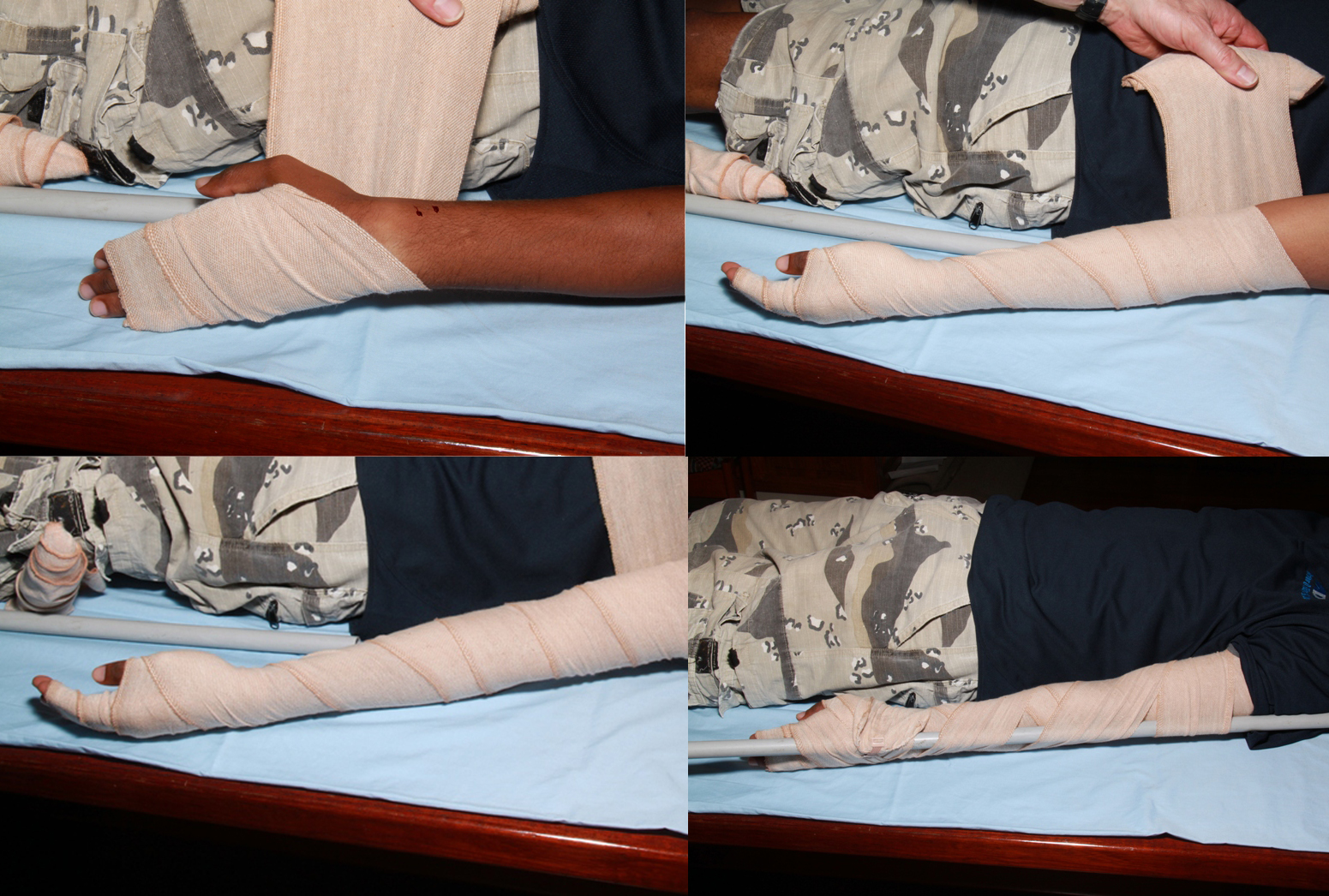
Bites to the hand or forearm
Bandage as much of the arm as possible, starting at the fingers.
Use a splint to the elbow.
Keep the patient still. Lie the patient down to prevent walking or moving around.
Note: We do not recommend that the arm be bent at the elbow and placed in a sling as this can create a tourniquet effect at the elbow.
Bites to the trunk
If possible apply firm pressure over the bitten area. Do no restrict chest movement. Keep the patient still.
Bites to the head or neck
No first aid for bitten area. Keep the patient still.
Summary
- Research stresses the importance of keeping the patient still. This includes all the limbs. Bring transport to the patient if possible.
- DO NOT cut or incise the bitten area.
- DO NOT apply an arterial tourniquet. (Arterial tourniquets, which cut off the circulation to the limb, are potentially dangerous, and are no longer recommended for any type of bite or sting in Australia.)
- DO NOT wash the bitten area or suck the bite. The type of snake involved may be identified by the detection of venom on the skin. No attempt should be made to catch or kill the snake.
- Note: Even if the bitten or stung person is ill when first seen, the application of pressure-immobilisation first aid may prevent further absorption of venom from the bite or sting site during transport to hospital.
- If the bandages and splint have been applied correctly, they will be comfortable and may be left on for several hours. They should not be taken off until the patient has reached medical care.
- The treating doctor will decide when to remove the bandages. If a significant amount of venom has been injected, it may move into the blood stream very quickly when the bandages are removed. They should be left in position until appropriate antivenom and resuscitation equipment have been assembled.
- Bandages may be quickly reapplied if clinical deterioration occurs, and left on until antivenom therapy has been effective.
- Hospital Staff
Please note that first aid measures are usually removed soon after the patient is admitted. Do not leave on for hours.